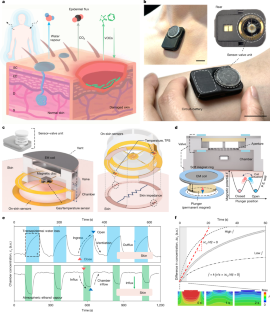2025-04-09 ペンシルベニア州立大学(Penn State)
<関連情報>
- https://www.psu.edu/news/earth-and-mineral-sciences/story/patchy-thermogels-show-next-gen-biomedical-material-potential
- https://advanced.onlinelibrary.wiley.com/doi/full/10.1002/adfm.202417544
パッチ状高分子ミセルに基づく熱誘起ゲル化システム Thermally Induced Gelling Systems Based on Patchy Polymeric Micelles
Binru Han, Shota Fujii, André J. van der Vlies, Masoud Ghasemi, Joshua T. Del Mundo, Sarah N. Kiemle, Esther W. Gomez, Enrique D. Gomez, Ralph H. Colby, Urara Hasegawa
Advanced Functional Materials Published: 16 November 2024
DOI:https://doi.org/10.1002/adfm.202417544

Abstract
Thermogels that exhibit a sol-gel transition at body temperature represent a promising class of injectable biomaterials for biomedical applications. Thermogels reported thus far are generally composed of amphiphilic block copolymer micelles with an isotropic thermosensitive surface that induces intermicellar aggregation upon heating. Despite the promise, these hydrogels exhibit low mechanical strengths due to their uncontrollable aggregation resulting in void formation. To gain better control over intermicellar assembly, herein a novel thermogel design concept is presented based on patchy polymeric micelles bearing multiple thermosensitive surface domains. These domains serve as “patches” to bridge the micelles to form a percolated network structure. Patchy micelles are prepared from a binary mixture of amphiphilic block copolymers: Poly(N-acryloylmorpholine)-b-poly(N-benzylacrylamide) (PAM-PBzAM) and poly (N-isopropyl acrylamide)-b-poly(N-benzylacrylamide) (PNIPAM-PBzAM), where PBzAM, PAM and PNIPAM are the hydrophobic, hydrophilic and thermosensitive blocks, respectively. At 25 °C, the polymers self-assembled into mixed shell micelles having a phase-separated shell with PAM- and PNIPAM-rich domains. At 37 °C, the PNIPAM domains undergo a hydrophilic-to-hydrophobic transition to induce intermicellar assembly into entangled worm-like structures resulting in hydrogel formation. Patchy micelles form a homogeneous network structure without voids. The micelle design significantly affects the inter-micellar assembly, the thermogelling behavior, and the mechanical properties of the hydrogels.


